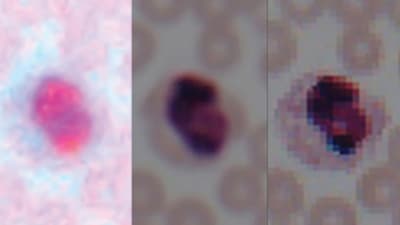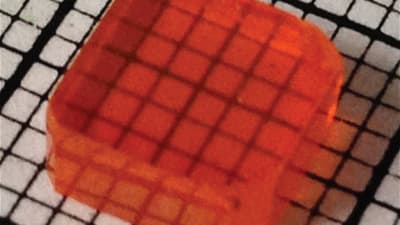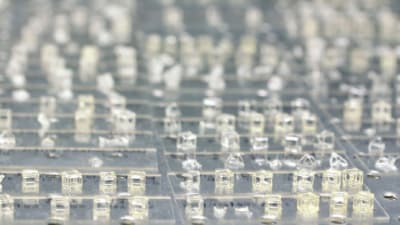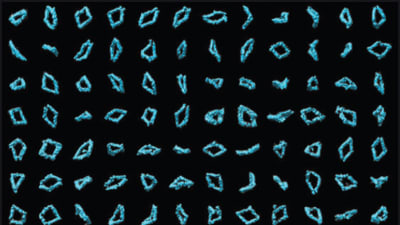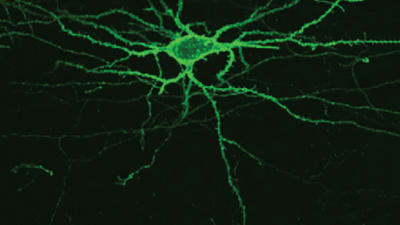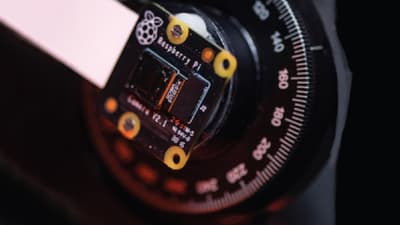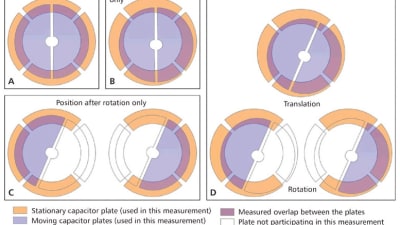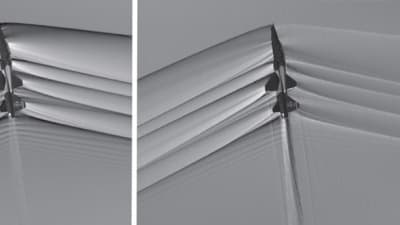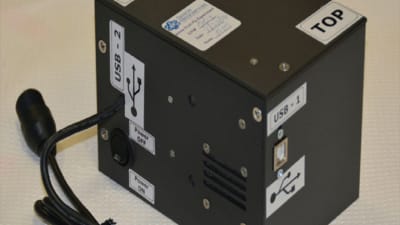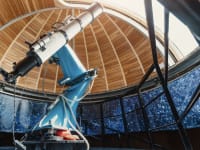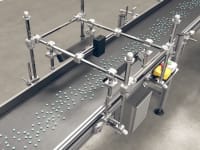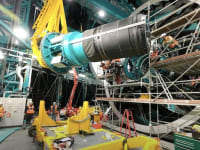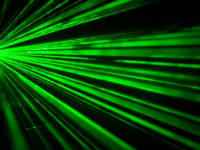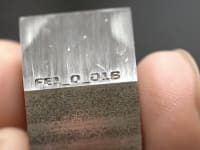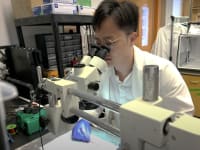34
61
169
-1
420
30
Briefs: Mechanical & Fluid Systems
A device and method have been developed to conduct compression and tensile tests on soft materials such as flocculated sediments, biopolymers, biological materials, and food stuffs. The device...
Briefs: Mechanical & Fluid Systems
The measurement of mechanical behavior in very small samples whose dimensions are on the order of microns and below can offer advantages over conventional macroscopic testing in many instances. Motivations for investigating...
Briefs: Sensors/Data Acquisition
Artificial intelligence (AI) has been used to teach wireless devices to sense people's postures and movement, even from the other side of a wall. RF-Pose uses a neural network to analyze radio...
Briefs: Electronics & Computers
Piezoelectric Thrust Vector Control for Hall Effect Thruster
The design of the CubeSat required precision pointing of the thrust vector through the spacecraft center of gravity to minimize fuel usage for attitude correction. Because the center of gravity shifts over the course of the mission, a means of adjusting the thrust vector was needed....
Briefs: Medical
Researchers at the UCLA Samueli School of Engineering have demonstrated that deep learning, a powerful form of artificial intelligence, can discern and enhance...
Briefs: Materials
A next-generation X-ray beamline now operating at the Department of Energy's Lawrence Berkeley National Laboratory (Berkeley Lab) brings together a unique set of capabilities to measure the...
Briefs: Imaging
Optoelectronic engineers in China and Hong Kong have manufactured a special type of liquid crystal display (LCD) that is paper-thin, flexible, light, and tough. With this, a daily newspaper...
Briefs: Photonics/Optics
Today's glass-based lenses are bulky and resist miniaturization. To address the problem, two different imaging methods — a type of lens designed for nanoscale interaction with lightwaves, and robust...
Briefs: Robotics, Automation & Control
Today's crop breeders are trying to boost yields while preparing plants to withstand severe weather and changing climates. To succeed, they must locate the genes for high-yielding, hardy traits in crop plants’...
Briefs: Mechanical & Fluid Systems
Hydraulic-Based Spherical Robot
Current spherical robots rely upon rotating mechanical weights inside the sphere to change the center of gravity of the sphere, causing the robot to roll. The use of rotating mechanical weights is not optimal due to the reliance upon moving parts, which can present burdensome maintenance issues. It would be...
Briefs: Imaging
Currently, concussion is measured by the symptoms someone experiences, but it is difficult to know what is happening in the brain in any one person. To address this problem, a portable brain imaging system was...
Briefs: Aerospace
A material was developed for nuclear radiation detection that could provide a significantly less expensive alternative to the detectors now in commercial use. Specifically, the high-performance material is...
Briefs: Photonics/Optics
While additive manufacturing (AM), commonly known as 3D printing, is enabling engineers and scientists to build parts in configurations and designs never before possible, the impact of the technology has been limited by...
Briefs: Electronics & Computers
Technological advancements in materials, sensors, and computing have driven demand for higher-performance satellites. Satellites need to be much more capable in a much smaller size with a longer...
Briefs: Electronics & Computers
Over the past decade, researchers have been working to create nanoscale materials and devices using DNA as construction materials through a process called DNA origami. A single long “sca...
Briefs: Materials
Researchers at the University of Texas at Dallas have solved a longstanding problem that has been plaguing the scanning tunneling microscope for more than 35 years: How to prevent...
Briefs: Medical
Neurons in the brain communicate via rapid electrical impulses that allow the brain to coordinate behavior, sensation, thoughts, and emotion. Scientists who want to study this electrical activity usually...
Briefs: Photonics/Optics
Rice engineers have developed a wide-field microscope thinner than a credit card, small enough to sit on a fingertip and capable of micrometer resolution over a volume of several cubic millimeters.
Briefs: Photonics/Optics
A driverless car is making its way through a winding neighborhood street, about to make a sharp turn onto a road where a child’s ball has just rolled. Although no person in the car can see that ball, the car...
Briefs: Lighting
Positional sensors have applications where a very accurate measurement of position is needed over a limited range. One example of such an application is in manipulation of a stage...
Briefs: Electronics & Computers
A limitation of today's ultrasound devices is that they are difficult to use on objects that don't have perfectly flat surfaces. Conventional ultrasound probes have flat...
Briefs: Semiconductors & ICs
The wetting behavior of a liquid on a solid surface is a phenomenon of significant practical importance. The angle of liquid-to-solid contact is important in areas such as adhesion,...
Briefs: Communications
Video Distribution & Storage Unit (VDSU)
Engineers at NASA Goddard Space Flight Center’s Satellite Services Projects Division (SSPD) have designed a high-performance, space-qualified video distribution and storage unit for Restore-L, a spacecraft that will rendezvous, grasp, refuel, and relocate client spacecraft. While previous...
Briefs: Energy
Commercial buildings in the United States account for nearly 40% of the total energy consumption. Among them, electricity is the largest energy source for buildings....
Briefs: Aerospace
NASA has developed a novel method to render visible the density changes in air that cause a refractive index change by an airborne vehicle. These density changes include shock waves, vortices,...
Briefs: Sensors/Data Acquisition
Polymer-Based 2D-to-3D Transformable Surfaces
Technologies using stretchable materials are increasingly important. Yet, in general, it is not possible to control how they stretch with much more sophistication than inflating balloons. A method was developed that allows the calculated transformation of 2D stretchable surfaces into targeted 3D shapes.
Briefs: Imaging
When testing composite structures, it is important to understand the response of the structure to the load. Of significance is the formation of damage and growth of that damage leading to...
Briefs: Sensors/Data Acquisition
Crew time on the International Space Station (ISS) is extremely limited for any operations on science payloads. Autonomous science experiments in small, self-contained, cubical payloads are highly desirable...
Briefs: Imaging
Thinning a material down to a single-atom thickness can dramatically change that material’s physical properties. Graphene, the best known two-dimensional (2D) material, has...
Top Stories
Blog: Manufacturing & Prototyping
2025 Holiday Gift Guide for Engineers: Tech, Tools, and Gadgets
INSIDER: Research Lab
Scientists Create Superconducting Semiconductor Material
Blog: Software
Quiz: Materials
Blog: Aerospace
Tech Briefs Wrapped 2025: Top 10 Technology Stories
Blog: Manufacturing & Prototyping
Webcasts
 Upcoming Webinars: AR/AI
Upcoming Webinars: AR/AI
The Real Impact of AR and AI in the Industrial Equipment Industry
 Upcoming Webinars: Motion Control
Upcoming Webinars: Motion Control
Next-Generation Linear and Rotary Stages: When Ultra Precision...
 Upcoming Webinars: Energy
Upcoming Webinars: Energy
Hydrogen Engines Are Heating Up for Heavy Duty
 Podcasts: Medical
Podcasts: Medical
How Wearables Are Enhancing Smart Drug Delivery
 Podcasts: Power
Podcasts: Power
SAE Automotive Podcast: Solid-State Batteries





